Some pictures from the archives, just to show what it is we’ve been looking at for the past two months.
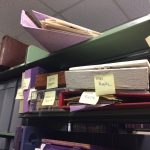
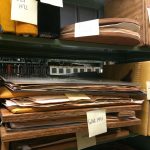
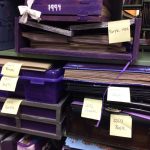
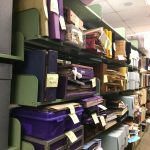
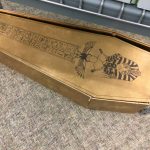
Course site for The Social Life of Books – A COPLACDigital course
Some pictures from the archives, just to show what it is we’ve been looking at for the past two months.
It’s one thing to have the knowledge that someone, somewhere on Gold Side Cabinet 2017 screwed up and misspelled your name. I get it, Haynes is a little unusual, and yeah, that underwear brand does spell it without the Y. It’s a bit annoying when you find it misspelled in the College Night program, but… Continue reading add insult to injury
It’s one thing to have the knowledge that someone, somewhere on Gold Side Cabinet 2017 screwed up and misspelled your name. I get it, Haynes is a little unusual, and yeah, that underwear brand does spell it without the Y. It’s a bit annoying when you find it misspelled in the College Night program, but hey, at least they included your double name at all, right? It’s even kind of alright when the production book does the same thing, because, hey, they didn’t call you Mary.
Sure, they probably should have someone double check with all the people they’re including in the program for spelling. In fact, I’m fairly certain I wrote my name on at least ten sheets of paper at different times that got turned into different Cabinet members. Actually, shouldn’t someone have checked on that? I really would like it if someone checked on that from now on.
These were the thoughts that ran through my head as I scanned the College Night 2017 book, digitizing it and the name “Mary Hanes Furman” to be put up on the internet for all of time.
We have finally digitized the last of the books. It’s quite a feat, considering that Greek Week was upon us and both Savannah and I took active roles in the events for our sororities. We managed to make time to disappear into the archives on Tuesday night, when I digitized the Gold 2017 book while Savannah plucked away on the timeline. Savannah is an actual goddess and found time to go back on Thursday and scan the Purple 2017 book.
For the first time, I wrote down thoughts about the book as I was digitizing it, so I have plenty of details for this one.
I’ve now digitized something like six books. You’d think that I’d be getting better as time went on, but this book seemed to prove me wrong. Multiple times I would accidentally hit scan, and spend the next thirty seconds yelling at the computer, “I DIDN’T TELL YOU TO SCAN!” while frantically shutting the scanner so that our retinas were not blinded by the bright light. After digitizing six or so books I can also say that each book takes about 2 to 2 and a half hours to scan in full, with maybe five to ten minutes for the program to go through the three step saving process.
Here is the experience I had as I scanned the Gold 2017 book:
Firstly, I witnessed different parts of the making of the Gold 2017 book. I know that they painted what was once multi-colored scrapbook black, and had even suggested they cover the spine of it (where the paint was already cracking, a week before it had to be turned in for judging) with something like black electrical tape. They did not heed this advice, and now, only two months after College Night, the ribbon that they had glued to the edges of the spine is already peeling off and bringing the black paint with it.
Besides that, though, the book is really not a bad book. In both of these 2017 books, the sides decided to put the pages of it in plastic sheets, much like those you protect pages with in a binder. This has been a trend for several years now. Another trend is stapling packets of each individual song together and putting them in their own plastic sleeve, rather than hole-punching and including them as part of the book. It was amusing to see the long string of almost identical-looking scans, as they included different packets for the vocal sheet music, the accompaniment (for which on one song required so many sheets of paper that a staple did not go though it, and they had to use an alligator clip).
This staple packet existed for every single song in the show, except for one song called “Royal Proclamation.” This was a rap, for which the composers of the show made a back track on an audio spinning software on a computer. Because of this, there wasn’t any sheet music. Instead, I found a CD (I thought I had taken a picture of it, but apparently I didn’t). This CD was in a broken case, with a homemade cover that featured the two composers, with crown emojis on each of their heads and the phrase “#it’s lit” followed by a fire emoji written on one side, in what appeared to be the red Snapchat writing feature.
That CD is possibly the most amusing thing I’ve seen out of a College Night book yet.
On the side of the project that does not deal with scanning: I finally found a theme that both Savannah and I like. Unfortunately, it seems to not be letting me change the title color of the site, despite the fact that when I go in to editing mode it tells me I have, in fact, changed it.
Hopefully in the next week we’ll get the rest of the pages for the site written and uploaded, as well as the tweaking of the finer details on the site itself.
There are many regrettable things in this world. Neon printer paper is one. Elmers glue sticks, unless you are a drag queen, is another. Glitter also makes that list, in many people’s opinions. All of these things were found in the Gold Side 1994 Production Book. We are in the … Continue reading
There are many regrettable things in this world. Neon printer paper is one. Elmers glue sticks, unless you are a drag queen, is another. Glitter also makes that list, in many people’s opinions.
All of these things were found in the Gold Side 1994 Production Book.
We are in the thick of digitizing. We have reached books that reflect the modern ones, and even have one with a wooden cover. Despite the knowledge that the 90s can generally be regarded as a time of trends that need to be forgotten, I was not prepared to open the 1994 books and be hit with the evidence so thoroughly.
The book was full of neon A4 paper that was falling off of the larger construction paper it was glued to- so much as nudging the paper was enough to dislodge what had once been attached. At one point, I accidentally brushed the book, and a flurry of glitter was sent flying towards Savannah.
Another challenge present itself before we even began to scan the Gold ’94 book. The book, we noticed, was bound in an unusual fashion- it had screws in the binding. Screws, as it turned out, that furrowed into each other. One of them was something like a pipe, and the other half screwed into it complete a little rod that kept everything in place.
These screws were plastic. They were unwilling to let go of one another. It took a screwdriver, a pair of scissors, a ruler, a lot of googling, and two sets of hands in order to get them undone so that we could scan the pages of the book. After we finally got the pages out, the rest of the scanning process involved me picking up pieces of paper and trying to place them in their original places on the page (or as close as I could get them).
In other news that doesn’t need to die, our IRV got approved! That’s about it that’s happened this week.
Last week was spring break. On the car ride to Tennessee, Savannah and I discussed the questions we are going to ask in our interviews, and how we want to document the interviews. We have chosen about five questions for each person we are interviewing, and have a vague idea … Continue reading
Last week was spring break. On the car ride to Tennessee, Savannah and I discussed the questions we are going to ask in our interviews, and how we want to document the interviews. We have chosen about five questions for each person we are interviewing, and have a vague idea of what we want to do for documenting.
In theory, I’ve always known that our library stays open until one o’clock in the morning, for all those students that function best after 8PM. Because of this piece of information, and the fact that I have access to the key that unlocks the archives, I’ve always assumed that I … Continue reading
In theory, I’ve always known that our library stays open until one o’clock in the morning, for all those students that function best after 8PM. Because of this piece of information, and the fact that I have access to the key that unlocks the archives, I’ve always assumed that I could very easily stay in the archives until the library closed. Tonight (or this morning, depending on how you like to look at things) I proved this correct.
In order to catch up with our timeline of book scanning, Savannah and I met outside the library just after 7PM. After brief chitchat (which was started by Savannah yelling my name from across an entire quad), we went into the archives and found the production books from the year after the school integrated boys in, 1958.
The College Night production books have not always had the grandeur that Savannah and I have described, with multiple moving parts or plexiglass or sarcophagus-shaped holders. In fact, the earliest book we have (from 1938) is actually not a book at all. Instead, they are receipts and lists, neatly filed into folders by some archival intern years before me. I know not of how they were stored before that, and I’ve not had the opportunity to ask the archivist if he knows, either. Savannah and I were aware of this lack of actual book before we began scanning. When we scanned the book for the 25th anniversary of College Night, 1944, we were eager to get through it so that we could get to the more interesting books. We believed the switch from files of paper, rather than the binders that Savannah and I are more familiar with, began in 1948.
In this thinking, we were incorrect. After going into the archives this evening and discovering that the production book for 1958 was not, in fact, a binder, has proven to us that the 1948 Purple book is simply an outlier. The production books for 1958 (thankfully separated into Purple and Gold, which the book for 1944 had not been) were once again files of paper. It was almost as if they were a stepping stone towards what we have today- the book had familiar elements, such as drawings of all set design and costuming, as well as lighting queues and a copy of the script and music. However, like the book from 1944, it also included receipts and purchasing records, which no longer are included in production books; it also lacks a cover or binding of any kind.
(This makes our endeavor for these books seem to stand on shaky legs- I do believe that one of the most common definitions our class included in how a book was defined was that it was, in fact, bound in some way.)
Scanning these unbound production records seemed to take a shorter amount of time than it actually did. Savannah and I have gotten the scanning process down to a science, and between the two of us the papers are able to be scanned quickly and have yet to get out of order (knock on wood). With the Great British Baking Show playing in the background, we knocked out both books from 1958 in about three and a half hours. (Gold Side’s book was 82 pages long, and Purple’s ended up being 71.)
Moving on from the 1958 books to the ones from 1969 (the 50th anniversary of College Night) was undoubtedly one of the best parts of the evening. By 1969, the books had completely evolved into the format Savannah and I recognize best- that of a binder/scrapbook, decorated carefully and listing all the people involved, while also documenting the creative portion of the process.
The initial excitement faded, though, as we got deeper into the book. I watched as the clock continued to tick closer and closer to 12:30. This was the time I had set in my head as wanting to be out by, as they begin shutting off lights about 10 minutes before the library closes, and while the archives are only mildly creepy to be in alone during the day, I do not want to imagine what they are like in the dark during the witching hour on a supposedly very, very, very haunted campus. Finally, just before 12:20, we scanned the final page of the Gold 1969 book. The .pdf took until 12:28 to go through the three different processing and saving steps that it must do, but at 12:28 on the dot we had a file called “Gold 1969001” saved on the computer and were able to leave the archives.
The reason this file took about eight minutes to save was due to its large size, well over 100 pages long (each of which must be processed individually by our scanning software). When Carey and I had first discussed digitizing the production books, we had done a little bit of math. We have books dating back to 1938, which is 79 years. The two of us assumed that there was a book for each side each year, so you must double 79 to 158. During this initial meeting, Carey estimated that each book was about 45 pages long. 150 x 45 = 7,110 pages that would need to be digitized. After tonight’s work, I’ve realized that this estimate of 45 pages per book was a drastic underballing of the number- the average page count is probably something around 90. For the sake of amusing myself (and the idea that I’m going to continue this digitization effort in the future after this class), let us now do this calculation. 158 books x 90 pages per book = 14,220 pages to be digitized.
14,220.
Fourteen thousand, two hundred and twenty.
That is s o m a n y.
Thankfully, Savannah and I have chosen only nine books to digitize. The other 149 (assumed) books that exist will have to wait for their turn.
On Wednesday, January 25th, Savannah Willard and I paid another visit to the archives of the University of Montevallo. During the bulk of today’s meeting, Mr. Carey Heatherly was in a meeting, so I got to go in and pull the books for Savannah and I to observe and interact with for this assignment. The […]
On Wednesday, January 25th, Savannah Willard and I paid another visit to the archives of the University of Montevallo. During the bulk of today’s meeting, Mr. Carey Heatherly was in a meeting, so I got to go in and pull the books for Savannah and I to observe and interact with for this assignment.
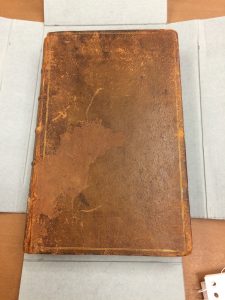 The book that I had the pleasure of looking at was Fables by John Gay, Volume 2, 4th edition. It was published in London in 1746, still in its original leather binding. On the spine, the whip stitching was visible. It was bound together with five whip stitches. The book was in relatively good condition, only the corners of the covers having worn through the leather over time. None of the pages were falling out, and it felt stable as I opened it.
The book that I had the pleasure of looking at was Fables by John Gay, Volume 2, 4th edition. It was published in London in 1746, still in its original leather binding. On the spine, the whip stitching was visible. It was bound together with five whip stitches. The book was in relatively good condition, only the corners of the covers having worn through the leather over time. None of the pages were falling out, and it felt stable as I opened it.
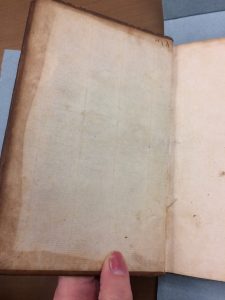 The paper was without a doubt laid paper. Chainlines running horizontally were visible throughout the entire book, and on the first one or two pages on either cover you could also see them running vertically. The pages were high quality, neatly trimmed and all of them opened. I could not find any evidence of a watermark, unfortunately.
The paper was without a doubt laid paper. Chainlines running horizontally were visible throughout the entire book, and on the first one or two pages on either cover you could also see them running vertically. The pages were high quality, neatly trimmed and all of them opened. I could not find any evidence of a watermark, unfortunately.
There were several signatures on the bases of pages. They started at B, and would go in a pattern of letter, letter 2, letter 3, letter 4 (for example: B, B2, B3, B4) on the right hand page for four consecutive pages. They would then be followed by four pages without signatures. Only pages that had text would have signatures There were also images in the book, but they were printed on slightly thicker paper and never had signatures nor print on both sides. They also were not 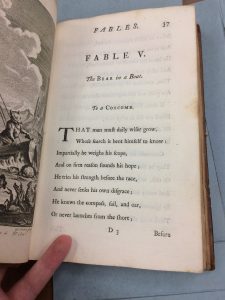 inserted at regular intervals into the book, leading me to believe that they were added to the pages later, after the text content had been folded and arranged. The images coordinated to the fables, and probably had to be inserted afterwards in order to align with the correct fable. When one removed the image pages from the equation, the signatures started every eight pages, except for the last two sets, which were four and two pages respectively.
inserted at regular intervals into the book, leading me to believe that they were added to the pages later, after the text content had been folded and arranged. The images coordinated to the fables, and probably had to be inserted afterwards in order to align with the correct fable. When one removed the image pages from the equation, the signatures started every eight pages, except for the last two sets, which were four and two pages respectively.
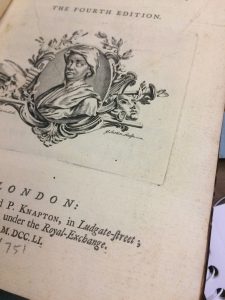 The typeset of this book had been punched in very firmly. Every single page was ridged with the letters that were on the other side, though I caught very few distortions of ink. There is a crest on the title page of the book that had been obviously pressed in after the other things, and left a very deep indention.
The typeset of this book had been punched in very firmly. Every single page was ridged with the letters that were on the other side, though I caught very few distortions of ink. There is a crest on the title page of the book that had been obviously pressed in after the other things, and left a very deep indention.
Based on the above evidence, but primarily on the frequency of the signatures, I would give the guess that this book was made in quatro style.
In learning about these things, I have definitely already noticed a change in my approach to books. Savannah and I were distracted when we went back into the archives to return the old books, looking at old student records accidentally because we thought the book was an old dictionary. I look forward to continuing to interact with the old books in our special collections, and learning more about their history.
I, along with fellow Montevallo student Savannah Willard, met with the school archivist to discuss the questions posed to us by Dr. Pauley and Dr. Bankhurst. Despite the fact that I have been interning in our school’s archives for the past semester, many of these questions were not things I’d gotten to explore yet, and […]